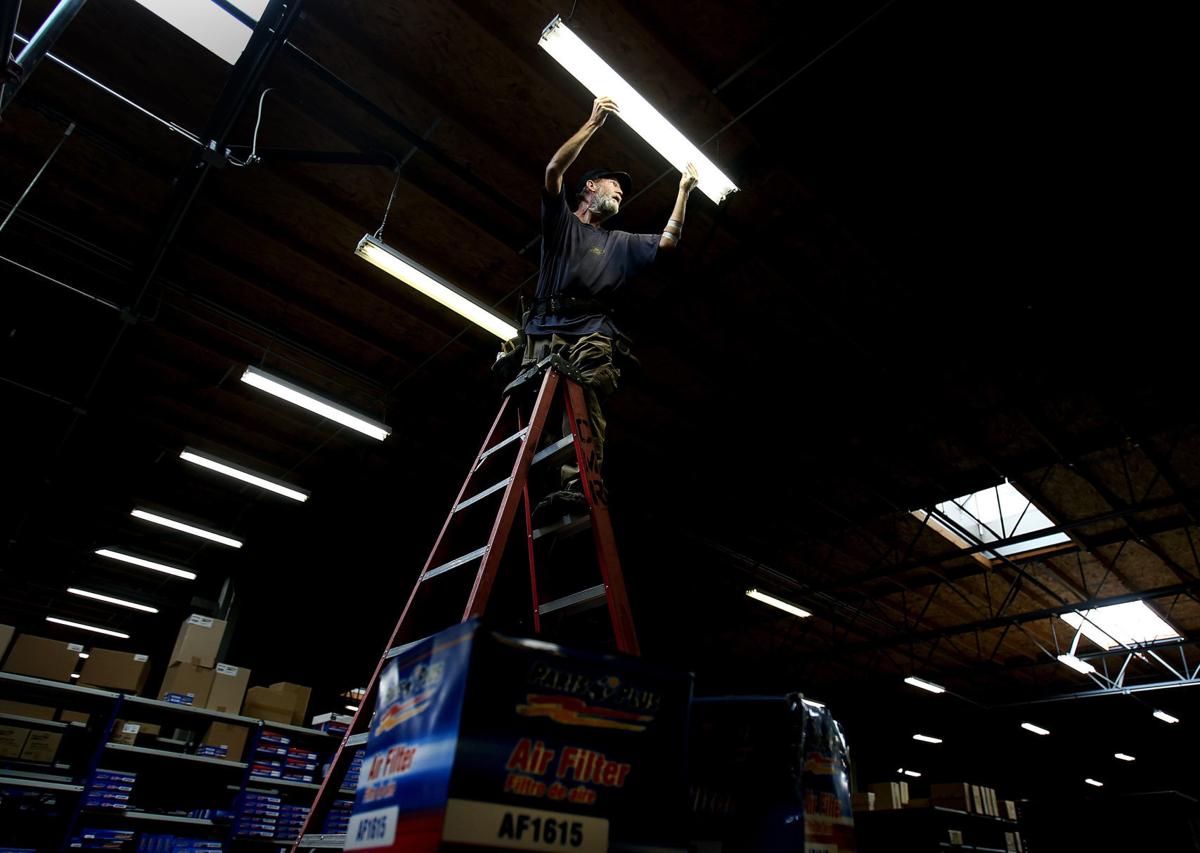Tucson Electric Power customers will see renewed opportunities for energy savings after state regulators ordered the utility to redouble efforts to spend more than $12 million in unspent funds on energy-efficiency rebates and related programs.
TEP had sought to refund about $12.4 million it collected from customers through its “demand-side management” surcharge for the past two years but didn’t spend, as COVID-19 restrictions limited customers’ energy-efficiency projects and some programs reached their budget caps.
But the Arizona Corporation Commission on Tuesday voted 3-2 to order TEP to come up with a plan to spend the money on energy-efficiency programs for home programs such as rebates for efficient heating and cooling systems; programs for multifamily housing; low-income household weatherization; and a new program for “advanced rooftop controls” for commercial heating, ventilation and air conditioning systems.
TEP had proposed refunding the $12.4 million in unused energy-efficiency funding with a one-time bill credit averaging about $16 for the typical home customer either in one month, or split over two months, with small-business customers seeing average credits of about $48.
The commission’s Utilities Division staff had recommended approving TEP’s proposed credit in one month.
But groups including the Southwest Energy Efficiency Project, Wildfire and the Arizona Public Interest Research Group Education Fund said the funds should be used as intended.
At Tuesday’s ACC open meeting, SWEEP Arizona representative Caryn Potter noted that TEP in its own energy-efficiency program report estimates that every dollar spent on energy-efficiency programs delivers $5 in net benefits.
Commissioner Sandra Kennedy successfully pushed an amendment to force TEP to spend as much of the unused funding before conclusion of the utility’s pending general rate case about a year from now.
Commission member Jim O’Connor tacked on an amendment adding the advanced rooftop controls program, which has been proposed by TEP as part of its pending rate case.
The advanced controls are retrofitted on existing commercial rooftop systems and save energy by allowing remote monitoring and control of things like fresh-air ventilation and fan speeds.
More than 30 states have adopted energy-efficiency standards, requiring utilities to curtail demand through programs including incentives for installation of efficient equipment ranging from discounted LED lightbulbs to high-efficiency HVAC units.
Arizona’s energy-efficiency standards, adopted in 2010, required utilities like TEP to achieve cumulative energy savings of 22% by 2020.
“Over the last couple of years, our customers have wrestled with financial challenges due to COVID-19,” TEP spokesman Joe Barrios said. “The pandemic has also had a negative impact on small businesses and commercial developments, which could participate in our commercial energy efficiency programs.”
During discussion on Tuesday, ACC Chairwoman Lea Marquez Peterson said she would support using the money for programs that would help lower customers’ costs in the near term amid the current record-high inflation.
TEP plans to file a budget for the unused funds, tentatively agreeing to:
Increase available rebate levels for its multifamily homes and existing homes programs up to 75% of project costs, from 50% now;
Potentially increase the budget for energy-efficiency programs at schools by possibly waiving a cap on rebates of $150,000 per school district, and instead setting a $100,000 maximum rebate per campus;
Increase the per-home spending cap for TEP’s Low-Income Weatherization Program to $10,000, from $6,000.
Marquez Peterson, a Tucson Republican, said she supported those changes aimed at helping consumer ratepayers, but the measure lost her support after language was added to give TEP some flexibility to spend some of the money on other programs.
The measure passed with the support of Democrat Commissioners Kennedy and Anna Tovar and O’Connor, a Scottsdale Republican. Marquez Peterson and Mesa Republican Justin Olson voted against the plan.
Diane Brown, executive director of Arizona PIRG, applauded the ACC’s decision, noting that TEP ratepayers stand to benefit both in the near-term and over the long term as energy efficiency reduces the need for costly new power plants.
“By taking advantage of utility energy efficiency programs, TEP customers save money and save energy,” she said. “However, even TEP customers that don’t take advantage of the energy efficiency offerings benefit through the avoidance of costly capital expenditures that otherwise get passed onto consumers.”
Barrios said while TEP has not proposed any new energy-efficiency programs, the utility is trying to make it easier for commercial customers to install improvements with a new “Fast Checkout” program, which eliminates the need to wait for rebate approvals when working with approved distributors.
“We hope that pandemic-related impacts on labor and customer confidence will diminish, encouraging our customers to participate in our energy efficiency programs,” Barrios added.
TEP recently filed for a rate increase that would boost home rates by an average of nearly 12%.




